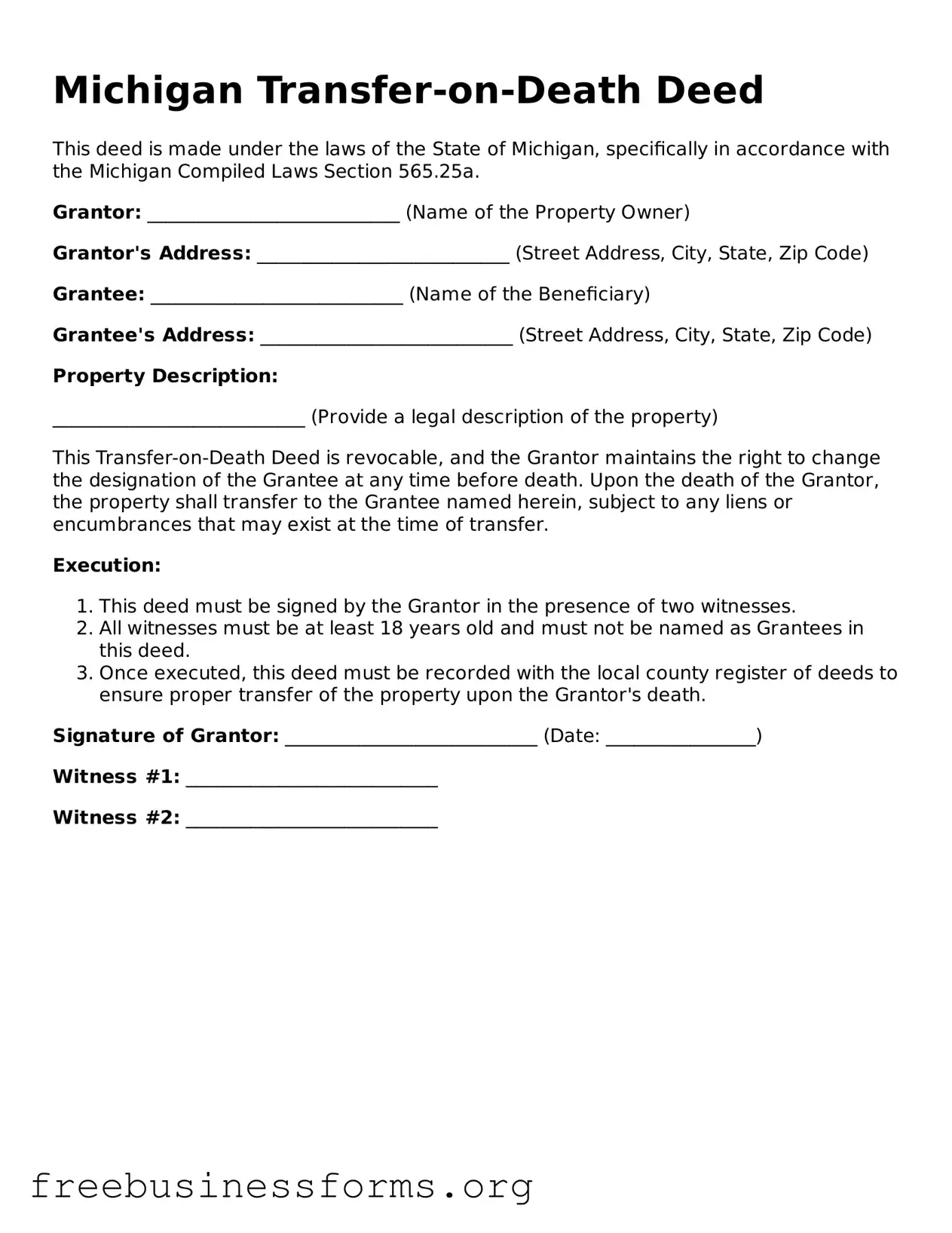Michigan Transfer-on-Death Deed
This deed is made under the laws of the State of Michigan, specifically in accordance with the Michigan Compiled Laws Section 565.25a.
Grantor: ___________________________ (Name of the Property Owner)
Grantor's Address: ___________________________ (Street Address, City, State, Zip Code)
Grantee: ___________________________ (Name of the Beneficiary)
Grantee's Address: ___________________________ (Street Address, City, State, Zip Code)
Property Description:
___________________________ (Provide a legal description of the property)
This Transfer-on-Death Deed is revocable, and the Grantor maintains the right to change the designation of the Grantee at any time before death. Upon the death of the Grantor, the property shall transfer to the Grantee named herein, subject to any liens or encumbrances that may exist at the time of transfer.
Execution:
- This deed must be signed by the Grantor in the presence of two witnesses.
- All witnesses must be at least 18 years old and must not be named as Grantees in this deed.
- Once executed, this deed must be recorded with the local county register of deeds to ensure proper transfer of the property upon the Grantor's death.
Signature of Grantor: ___________________________ (Date: ________________)
Witness #1: ___________________________
Witness #2: ___________________________
